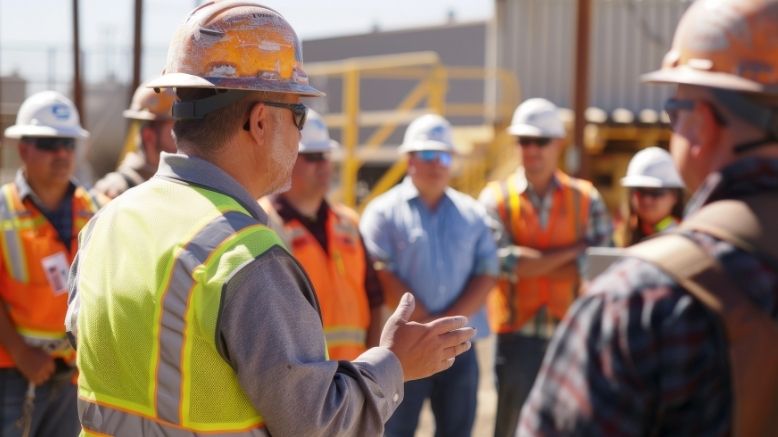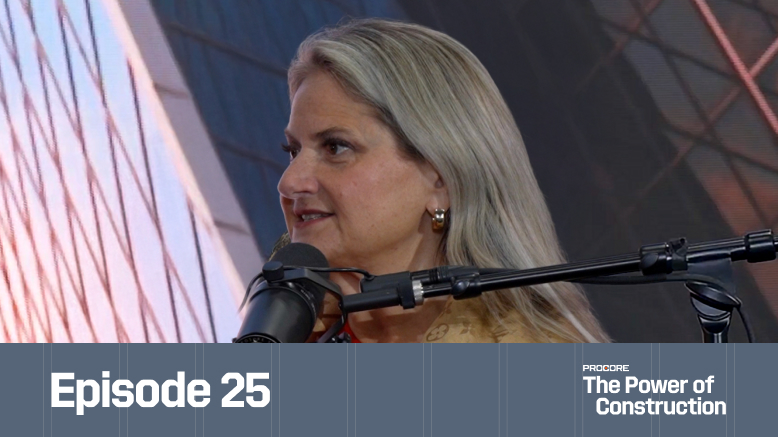— 10 min read
What Is Construction Fast-Tracking?


Last Updated Mar 17, 2025

D. Jesse Mase
Principle Operational Excellence Specialist
10 articles
D. Jesse Mase has a wealth of experience spanning architecture, construction, and real estate investment. His passion for the built environment led him to self-employment as a design builder, and later, managing large-scale commercial construction projects at Trehel Corporation. Currently, Jesse leverages his industry insights in his role as Principal Strategic Product Consultant at Procore, streamlining processes and solutions for construction project owners.

Julia Tell
Contributing Writer
64 articles
Julia Tell is a freelance writer covering education, construction, healthcare, and digital transformation. She holds a Ph.D. in Media & Communications and has written for publications including Business Insider, GoodRx, and EdSurge, as well as nonprofits, international businesses, and educational institutions.
Last Updated Mar 17, 2025
Fast-track construction is a project delivery technique that compresses the time to project completion by overlapping phases of construction. Construction on site starts before the design is complete, with design teams keeping slightly ahead of construction to shorten the time to deliver the project to the owner. Though this method can increase profitability, contractors must balance the need for speed with careful risk and quality management.
Traditional construction delivery methods, such as design-bid-build, take longer to complete because each phase is sequential. Contractors and owners can use fast-track construction with design-build or other delivery methods to compress the timeline, overlap design and build segments, cut costs and begin using the property sooner.
This article will cover the pros and cons of construction fast-tracking and discuss tips and best practices for owners considering this methodology to speed up project delivery.
Table of contents
Benefits of Fast-Track Construction
There are many reasons why companies may choose to use fast-tracking on one or many projects, though the return on investment (ROI) is often the main driver. Use cases for fast-track include mixed-use, high-rise, highway and infrastructure, office and warehouse, multifamily and public projects such as schools and healthcare facilities.
The basic operating idea behind the fast-track delivery method is that we don't have the entire problem solved before we go to work. We would have a potential project and allocate a significant investment in due diligence on it. Prior to committing to the project, we’d study everything we could to figure out if this will make financial and practical sense.

D. Jesse Mase
Principle Operational Excellence Specialist
Procore Technologies
Almost any category of construction could be performed in this fashion, but not every project is well-suited to this method. Below are some of the key benefits of the fast-track method of construction.
Time Efficiency & Quicker Execution
The sooner a building is completed, the sooner owners can begin to make money on the property. Fast-track can also be used for public projects like critical infrastructure or for disaster recovery, in cases where public services are severely limited until the project is delivered.
Lower Labor Costs
With a shorter project timeline, workers are on the project for a shorter time, potentially saving on labor costs.
Reduced Debt Costs
Shortening the project timeline will reduce the carrying cost of construction loans. By borrowing money for 18 months instead of three years, borrowers save on the debt service cost, just as a homeowner saves money on a shorter mortgage loan. However a project is financed, the servicing costs on the debt can be 10 percent or more, and a shorter repayment time can translate to significant cost savings.
Profitability & ROI
In addition to the cost savings from cutting labor hours and interest payments, fast-tracking can help mitigate inflation costs by allowing the purchase of materials before prices rise.
Disadvantages & Risks of Fast-Track Construction
Understanding the drawbacks and challenges can help companies decide if fast-track is a good option for projects.
High Stakes, High Stress
Even without fast-tracking, the construction industry is already stressful. The work environment of fast-track projects, characterized by continuous, intense pressure, turns up the dial on everyone involved. Team members often have to make quick decisions based on incomplete information, which can be mentally and emotionally exhausting. The relentless pace and high stakes can lead to burnout.
The necessity to complete projects swiftly means there is little-to-no room for delays. Missing deadlines can result in significant financial losses due to debt interest, lost sales revenue, and worker costs.
Success in fast-track construction demands a high level of mental toughness and the ability to thrive under chaotic conditions. The fast-track method isn't suitable for everyone, and those who cannot adapt to the demands often leave the industry or move to less stressful roles.
The fast-track world is the highest stress, highest stakes construction I've ever done because time is the commodity, and there's none of it.
D. Jesse Mase
Principle Operational Excellence Specialist
Procore Technologies
Potential for Errors
Scheduling construction tasks is more nuanced on fast-track projects. When the design team only stays a few steps ahead of the build, the potential for errors increases. Fast-track projects may have a higher level of change orders depending upon the contract structure, given that less information is available up front. The potential for clashes and the need to resolve them quickly can lead to mistakes.
Workers and managers are under a lot of stress, which can decrease their ability to think holistically and thoroughly through everything that is happening. Issues can be missed when multiple trades and frequent small changes are involved. Robust planning for safety and quality controls helps mitigate these risks, but the added speed requires hyperfocus to avoid incidents or costly delays.
Every day doing fast-track, I barely have enough information to do my job. And if something goes wrong, it’s very costly.
On one project, we issued shop drawings for a bunch of steel that needed to be bent to make an elevation change by a pool. The shop drawings were approved in error, and the steel arrived wrong for this outside pool, which was integral to the whole design. We lost five days.
My boss let me know how much money it costs us daily in interest and lost revenue on the sales end – plus the cost required to keep the workers paid. If we didn’t pay them, they would leave and we wouldn’t get them back. So this shop drawing error was a million-dollar mistake.
D. Jesse Mase
Principle Operational Excellence Specialist
Procore Technologies
Financial Risk
Fast-track builders often shoulder considerable risk because the financial consequences are substantial if something goes wrong. Any delay means additional financing costs, potential lost revenue for late delivery, and paying workers for extra time on site. The upside is that it can be very profitable if the project goes well.
A fast-track project depends on strong due diligence and accurate cost estimates. If the financial model turns out to have flaws, that can eat into or erase the profit. There’s little room for rework or any type of delay, as the financials rely on the quick completion of the job.
Assembling the Fast-Track Dream Team
With the intensity of fast-tracking, companies that use this method need a tight-knit team and strong communication to manage the complexities of this process. Design teams, project managers and site superintendents need solid experience and skills to manage constant change as the design evolves and takes shape while the building is being built.
Construction companies should ideally choose experienced subcontractors they have worked with before. Having established working relationships with subs is imperative to making a fast-track project go reasonably smoothly.
Contractors shouldn't be surprised to pay higher rates for fast-track work because it is more demanding, and retaining good subs is crucial to delivering your projects on time. Vetting for contractors is easier if the company has a successful history of collaboration on other projects.
The Fast-Track Process
The riskiness of fast-track means that contractors need to be even more prepared and stay on top of issues than in traditional construction.
Due Diligence & Preconstruction
Sometimes with fast-tracking, the due diligence before taking on a project or purchasing land to develop may factor into how companies determine if the project's cost and the expected selling price make it worth it. The pro forma needs accurate estimates for all materials, labor, and construction costs. In addition, the cost of financing comes into play.
The team should investigate any possible complicating issues on the ground, as any snags with permitting, site conditions, or other factors can quickly derail a project. As companies consider a project, they also assess their confidence in these projections to understand the risk.
For projects, we would study everything possible about it to figure out if this will come back to bite us when we start to build. Our company used our broker to buy the land and sell the finished project. When we bought a property after due diligence, we would literally deliver the check at closing and begin drilling the same day.
D. Jesse Mase
Principle Operational Excellence Specialist
Procore Technologies
Preconstruction time may be shorter in fast-track construction, as time is the driving factor in making the project profitable. Therefore, companies with experience in the market and the project type are better positioned to understand the risks and have the know-how to complete the project.
Phased Permitting & Construction
Once the preliminary engineering is done and the team knows the size of the building, the foundation can be started before the complete floor plans of the levels above are known. As each project section is designed, the team secures permits for the next phase so that work can begin on that section.
We would permit about three to five floors at a time. We had the concrete contractor and we’d get the permit and start the work. While feverishly working on this section, we were trying to stay two or three lifts ahead.
D. Jesse Mase
Principle Operational Excellence Specialist
Procore Technologies
Keeping up with issues that arise on-site while continuing to issue design drawings for the next phase of construction can be very stressful for the design team. The design team typically has to issue multiple sketches a day to resolve problems.
Coordination, Communication & Technology
Regularly scheduled meetings with the relevant team members can keep fast-track projects moving forward more smoothly. With design and construction teams working simultaneously, keeping track of what is happening on-site and plans for the near future is key to ensuring that problems are resolved quickly and anticipated as much as possible. Expert project management techniques, using approaches like the Critical Path Method, can help keep the scheduling on track.
Construction management software can improve the tracking of RFIs and change orders, keeping communication in one place for easy reference by all stakeholders. Drawing changes may need to happen in a drafting program, with those drawings attached to emails and tracked in management software.
Courses about construction.
For construction.
Unlock your career potential with our free educational courses on Health & Safety, Data in Construction, and more.
7 Tips for Successful Fast-track Implementation
There are upsides for companies considering trying construction fast-tracking, but understanding the challenges and preparing for the process can help contractors achieve better outcomes as they do so.
Start small.
Choose a manageable project size and type — one that your team could deliver blindfolded with your hands tied.
Do your due diligence.
Be conservative in your due diligence, ensuring a high level of confidence in the capacity to deliver the project and that the numbers will work out. Don’t undervalue due diligence and pre-construction planning.
Hire the right team.
Subcontractors and key personnel need to be experienced and reliable to make fast-track projects successful. Subs need to be highly committed to the project, which may mean offering higher rates for fast-track jobs.
Maintain good relationships.
Strong working relationships with subcontractors, owners, financing partners, and other stakeholders make fast-track projects happen. Keep a short list of the fast-track dream team members to build projects quickly.
Keep communication organized.
The fast-changing details during construction fast-tracking require clear, frequent, well-organized communication. Drawings and change orders need to be easily accessible to team members. Construction management platforms are an asset.
Define safety & QC measures.
All projects need safety and quality monitoring, but these can be overlooked with an emphasis on speed. Ensure that robust procedures are in place and are followed by managers and workers.
Manage stress.
Prepare the team for the high-stress environment and support them in the challenges. Some people thrive on the challenge and fast pace, but it helps if everyone is prepared. The team needs to be “all in” to make fast-track projects work.
"We had a bunch of 4X8 sheets of plywood on the roof 21 stories above ground. The building was right off the highway, and we had a wind event in that particular city. The sheets were blowing off the roof onto the freeway.
We would have benefited from someone coming through and inspecting at the end of the day, getting it cleaned up before we rolled out.
D. Jesse Mase
Principle Operational Excellence Specialist
Procore Technologies
Balancing Speed & Risk
Construction fast-track projects can be highly profitable. With careful consideration of the underlying factors that mitigate the risks and increase the likelihood of success, undertaking fast-track projects can be a pathway to increasing company profitability.
Was this article helpful?
Thank you for your submission.
100%
0%
You voted that this article was . Was this a mistake? If so, change your vote
Scroll less, learn more about construction.
Subscribe to The Blueprint, Procore’s construction newsletter, to get content from industry experts delivered straight to your inbox.
By clicking this button, you agree to our Privacy Notice and Terms of Service.
Thank you!
You’re signed up to receive The Blueprint newsletter from Procore. You can unsubscribe at any time.
Categories:
Written by

D. Jesse Mase
Principle Operational Excellence Specialist | Procore Technologies
10 articles
D. Jesse Mase has a wealth of experience spanning architecture, construction, and real estate investment. His passion for the built environment led him to self-employment as a design builder, and later, managing large-scale commercial construction projects at Trehel Corporation. Currently, Jesse leverages his industry insights in his role as Principal Strategic Product Consultant at Procore, streamlining processes and solutions for construction project owners.
View profile
Julia Tell
Contributing Writer | Procore Technologies
64 articles
Julia Tell is a freelance writer covering education, construction, healthcare, and digital transformation. She holds a Ph.D. in Media & Communications and has written for publications including Business Insider, GoodRx, and EdSurge, as well as nonprofits, international businesses, and educational institutions.
View profileExplore more helpful resources

Defending Against Financial & Legal Risks on Megaprojects
The construction industry has seen marked growth in megaprojects. Some experts classify any project over $500 million as a megaproject, while others argue that the build needs to be $1...

Unlocking Project Intelligence: Moving from Raw Data to Actionable Insights
The construction industry faces a wide range of challenges, from ongoing labor shortages to frequent cost overruns. But some the biggest hurdles all stem from unpredictability. The general contractors (GCs)...

Who is accountable for innovation in construction?
Everyone says construction needs to innovate—but no one agrees on who’s actually responsible for making it happen. Is it the owner? The builders? The tech vendor? Or is innovation everyone’s...

Integrated Project Delivery in Practice: A Framework for Collaboration
On construction projects, traditional delivery methods put different stakeholders in their own silos. While the design team feeds drawings and specifications to the general contractor (GC), the GC’s expertise in...
Free Tools
Calculators
Use our calculators to estimate the cost of construction materials for your next project.
Templates
Find a template to help you with your construction project tasks.
Material Price Tracker
Get the latest U.S. retail prices and view historical trends for common building materials.
Glossary
Explore key terms and phrases used in the industry.
